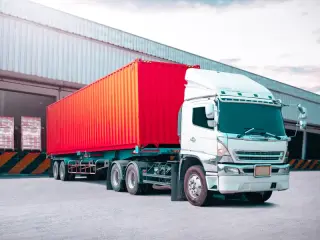
Since at least 2018, there has been a shortage of HGV drivers in the UK, however by the end of 2021 this reached an all-time high. The impact of Brexit and the Covid-19 pandemic was significant, as the number of qualified drivers fell, partly due to delays within the application process which resulted in long waiting lists for vocational HGV tests.
Previously, we’ve considered what factors were limiting recruitment for these roles and analysed the solutions that were proposed by the UK Government. Now that we’re 12 months on, we’ve reinvestigated the HGV driver shortage to determine if the haulage industry is on the road to recovery.
What was the HGV driver shortage?
According to the Road Haulage Association (RHA), the shortfall of HGV drivers in 2021 was around 100,000. As a result, supermarket shelves had limited availability of products and, other large businesses such as McDonald’s faced shortages of stocks with some even being forced to close their outlets.
The shortage of drivers added to the pressure on those in the haulage industry as they were already struggling to recruit enough qualified drivers for their fleets to meet the increased demand for online goods.
Why did the HGV driver shortage take place?
Arguably, the two main factors that caused the HGV driver shortage were Brexit and the Covid-19 pandemic. However, there were already issues with driver retention in this industry due to low wages, long working hours and an ageing workforce.
Although there has been a shortfall of drivers over the last few years, the climax in 2021 was due to a combination of different factors which impacted the haulage industry directly. The key issues were:
The Covid-19 pandemic – The impact of Covid-19 was monumental for everyone, but it particularly impacted HGV drivers as many were unable to work due to national lockdowns and some left the industry altogether.
Driver training and testing were paused for more than 12 months, causing huge backlogs which reduced the number of new recruits. In addition, around 25,000 EU drivers returned home during the pandemic and very few have returned which created a shortage of drivers that could not easily be replenished.Brexit – European HGV drivers have previously made up a significant proportion of the UK driver workforce. However, new immigration rules that were introduced as part of Brexit have made it more difficult for European drivers to work in the UK as freedom of movement has been restricted.
Goods entering the UK from the EU are also now subject to checks which could deter European drivers from working in this country if they’re too time-consuming and intrusive. Many drivers are paid by the mile rather than the hour, so any delays in their journeys caused by these checks could lose them money.
Brexit is therefore a large contributor to the reduced number of qualified HGV drivers that can work in the UK, adding to the shortfall of drivers.Retention – This is a key issue for this sector, as many HGV drivers have recently left the workforce due to the poor work/life balance of this career as they no longer want to work long and antisocial hours. Wages were stagnant for over 15 years which not only caused some drivers to leave the industry but also failed to attract new recruits.
In addition, a recent survey by Transport Focus highlighted that poor roadside facilities were causing drivers to leave this sector and they also act as a deterrent for new recruits. Security, cleanliness and cost of roadside facilities are the main issues that HGV drivers face and so these facilities need to be improved in order to retain drivers.Diversity - The average age of HGV drivers is 55 and many of these drivers are looking to retire soon. Although newly trained drivers usually offset the retirement rate, there were so few newly qualified drivers available in 2021 that the shortfall was expanded. The lack of diversity also discouraged recruits, particularly women who represent just 2% of the driver workforce.
So, where are we 12 months on?
This sector has come a long way in the last 12 months with the number of HGV drivers in the UK now exceeding pre-pandemic levels. This was partly due to new policies that were introduced by the UK Government that were specifically aimed at attracting drivers back to this sector and providing more support and training for new HGV drivers.
Some of the incentives that have helped to reduce the HGV driver shortage include:
New HGV Skills Bootcamps which have been created to train over 11,000 more people to become HGV drivers.
New Large Goods Vehicle Driver apprenticeships provide up to £7,000 of funding for training and will help to encourage younger drivers to join this industry.
The number of HGV driving tests has increased by 90% compared to pre-pandemic levels.
£32.5 million investment into roadside facilities for HGV drivers, so that they can access suitable showers, toilets, and eating areas whilst on the road.
Vehicle excise duty for HGVs has been frozen until 2023.
The HGV road user levy has been suspended until August 2023.
In addition to these policies, wages for HGV drivers have been raised to help retain existing staff and attract new drivers and those qualified to drive HGVs are now earning up to 25% more than last year.
There are now an estimated 305,000 HGV drivers working in the UK which suggests that the recruitment crisis has now been resolved. However, it’s likely that this industry will experience short-term shortages during periods of high demand as there is still a shortfall of drivers by 50,000.
There are also new challenges that HGV drivers are facing, including increasing fuel prices and the ongoing pressure to decarbonise vehicles. It’s therefore important that the Government not only focuses on improving working conditions for drivers but also helps businesses to invest in new greener vehicles, such as hydrogen so that drivers can be more efficient and help protect the environment.




